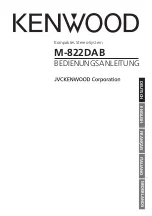
1.1
Introducing The DXPT1
The DXPT1 is a digital interface board supporting up to 24 simultaneous calls on two pairs of wire. The
advantages of T1 over single-channel systems are largely:
•
Cost savings (much lower price per channel)
•
Greater reliability
•
Uses less copper wires
•
Improved voice reproduction
•
More features available
T1 is over 20 years old but the services have been upgraded during this time (for example, extended
superframe).
T1 uses time division multiplexing techniques which multiplexes 24 channels in a stream. Each channel
is 8 bits wide. The total is 24 channels x 8 bits = 192 bits for user information. An additional bit is added
at the beginning of the stream to identify the particular frame. A frame every 125 msec or 8000/second.
12 frames make up a superframe for standard T1. ESF mode requires 24 frames per superframe. The
frame bit in superframe mode is used 100% of the time. The sequence for the frame bits is:
100011011100. The first bit of each frame (frame bit) repeats over and over
|
|
A
B Of the 12 frames, the 6th and 12th contain the “A” and “B” signalling bits respectively.
The signalling is inband (mixed with the channel). For the two binary bits (A and B), only four combina-
tions are possible (00, 01, 10, 11). These bits are assigned according to the signalling protocol (for
example, E&M, DID, Loop Start, and Ground Start). See section 3, “Troubleshooting The Protocol
Layer.”
The span speed is 1.544 MHz (193 x 8000/sec).
For extended superframe (ESF), the frame-related bits in the 24 frames are:
ESF Framing Format
mcm0mcm0mcm1mcm0mcm1mcm1...6 frame bits (0 or 1) on frames 4, 8, 12, 16, 20, 24 (2 Kbps)
12 maintenance bits (m) (4 Kbps)
6 CRC error checking bits (c), if enabled (2 Kbps)
Therefore, all of the 24 non-user bits (frame, maintenance, and error checking) use a bandwidth of 8 Kbps
out of the total bandwidth of 1.544 Mbps.
The A and B signalling bits are inserted over the least significant bits (LSB) of each channel in the 6th
and 12th frame respectively. This does not change the speech encoding enough to be detected by the user.
The A and B signalling bits are repeated in the 18th and 24th frames.
1.2
Describing The Channel Service Unit (CSU)
The DXPT1 board has a CSU built into the board. This allows direct connection to the network (DS1
level). If a CSU was not built-in, the connection would be DSX-1 and would only transmit 655 feet to the
nearest 66-type connector block. The CSU increases signal drive to 1 mile, provides electrical isolation
(1500 volts), and provides automatic line build out (ALBO). The output is set depending on the received
signal level strength. When a strong signal is received, the transmit level is -15 dB. When a weak signal is
received, the transmit level is 0 dB. This ability to adjust output levels prevents over driving a line
repeater in the network, if directly connected. If a customer still wants to add an external CSU, he/she
may do so. Normally, the DXPT1 is connected to a central office “smart” jack. The customer’s savings
from using the built-in CSU can easily amount to approximately one thousand dollars, at today’s prices.
NOTE: If an external CSU is added by the installer for the purposes described above, and the mode is
Extended Superframe, check the SW2-2 switch for the correct ID, if in conflict.
IMI89–207
Troubleshooting The DXPT1 Installation
6 – Troubleshooting The DXPT1 Installation
















































